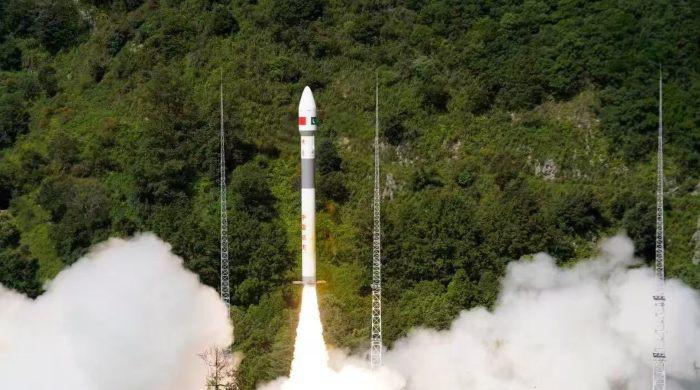- The satellite was launched from the Xichang facilities in China.
- Fifth Pakistani satellite now active in orbit.
- Ahsan Iqbal praises Supparco, the support of China.
Karachi: Pakistan has successfully launched its latest remote detection satellite in the Xicheng Satellite launch center in China (XSLC), the space research commission and the upper atmosphere (Supparco), which marks a great milestone in the country’s growing space program, said Thursday.
According to a spokesman for the National Space Agency, the new satellite is expected to support national capacities in land observation, agricultural monitoring and environmental analysis.
The satellite will also contribute to the geospatial and monitoring of strategic initiatives such as the Chinese-Pakistan Economic Corridor (CPEC), will help with regional planning and support natural resources management efforts.
The spokesman for Supparco added that the satellite will help identify transport networks and geographical risks.
According to the agency, this is the second remotetection satellite of Pakistan after PRSS-1, which was launched in 2018. With the addition of the new satellite, five Pakistani satellites are now operational in orbit, strengthening the national capacity in monitoring and disaster management based on space.
The launch occurs as part of the policy and vision of the broader national space of Pakistan 2047. According to Supparco, the new satellite is equipped with avant -garde image systems and will help predict and mitigate natural disasters, including floods, earthquakes, landslides and glacier foundry.
Supparco has said that the satellite is equipped with advanced image systems designed to help precision agriculture, disaster response, urban planning and climate surveillance.
The Federal Planning Minister, Ahsan Iqbal, congratulated the Nation for the successful launch and praised the team, engineers and scientists of Supparco for their achievement. Iqbal said that the satellite had successfully reached its orbit and expressed its gratitude for China’s strong support by making the mission possible.
In a shared message in X, Iqbal described the launch as “another Uraan de Pakistan”, and declared it “another proud moment for our nation.” He said that the mission reflects the “dedication and excellence of Supparco and its brilliant team”, and said that the milestone “not only strengthens Pakistan’s abilities in space exploration, but also leads Pakistan -China Brotherhood of iron beyond heaven.”
In addition, he declared that Pakistan would restore his leadership role in space technology and revealed that next year, with Chinese assistance, a Pakistani astronaut would be sent to space. IQBAL also announced that Pakistan aims to successfully complete his program to reach the Moon in 2035.
Previously, Supparco had declared that the satellite would play a fundamental role in sustainable development by improving resource management, supporting precision agriculture and facilitating urban and regional planning.
The mission is based on a decade of progress since the launch in 2011 of Paksat-1R, followed by Paktes-1A and PRSS-1 in 2018. In 2024, the country achieved another milestone with the launch of Paksat-MM1, providing high-speed internet to remote areas.
The first lunar satellite built by the student of Pakistan, Icube qamar, was also a global headline with its images of the moon surface.
More recently, in January 2025, Pakistan launched its first totally indigenous satellite, EO-1 electrooptic satellite, completely developed by local engineers and scientists, designed for agriculture, disaster monitoring and environmental analysis.




